
LOADING ...
In response to evolving domestic opinion, eMedals Inc has made the conscious decision to remove the presentation of German Third Reich historical artifacts from our online catalogue. For three decades, eMedals Inc has made an effort to preserve history in all its forms. As historians and researchers, we have managed sensitive articles and materials with the greatest of care and respect for their past and present social context. We acknowledge the growing sentiments put forth by the Canadian public and have taken proactive actions to address this opinion.
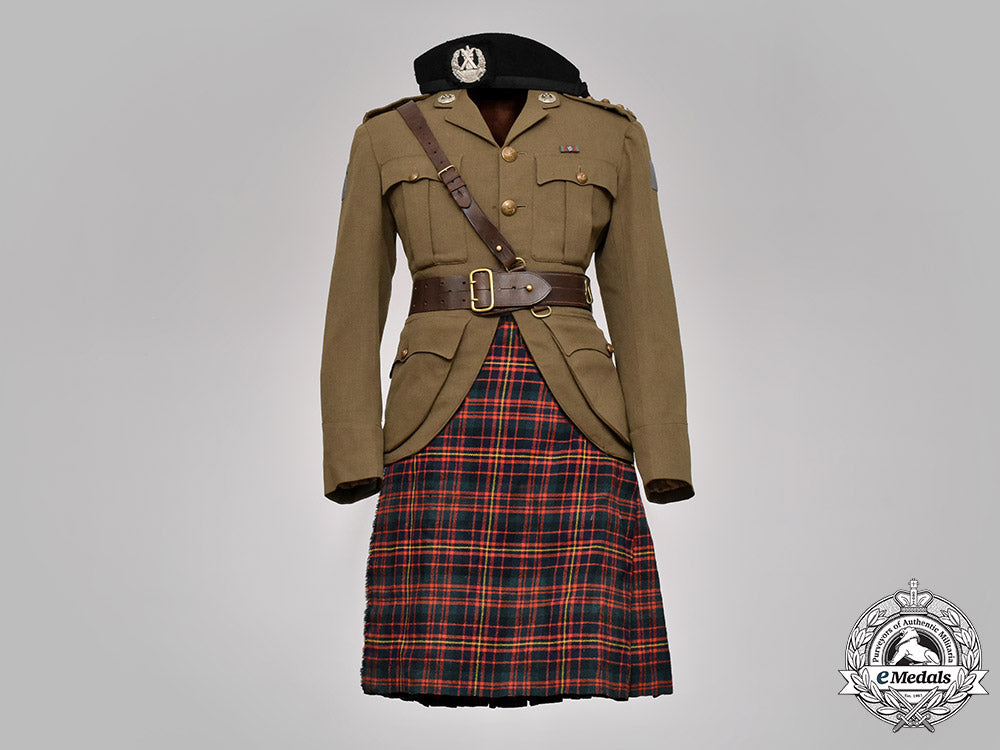
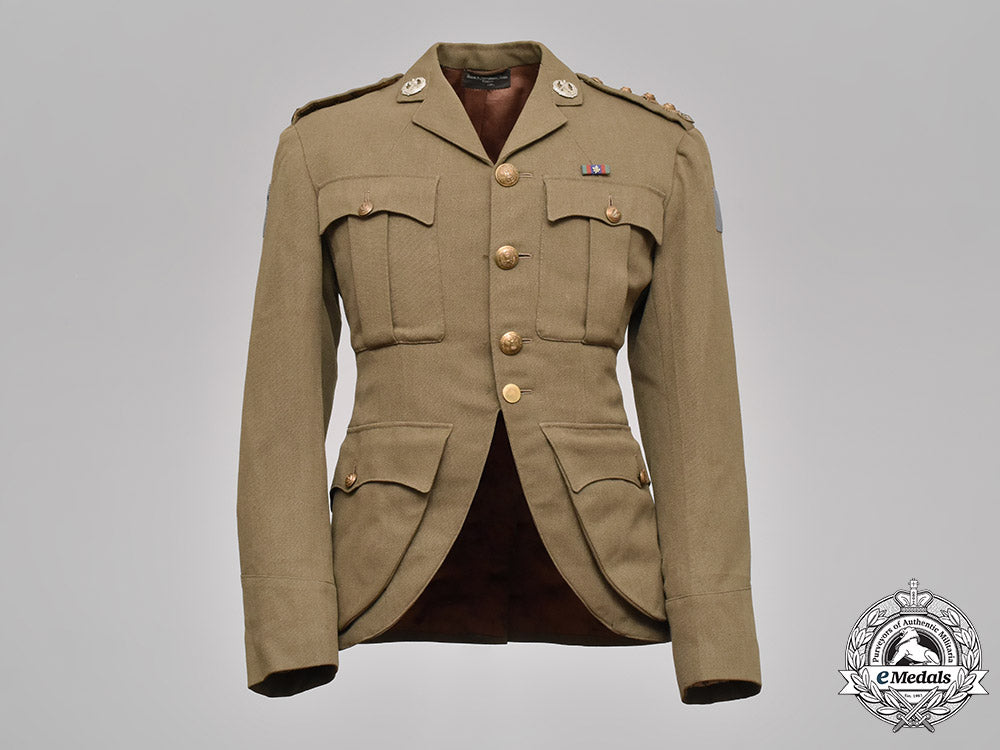
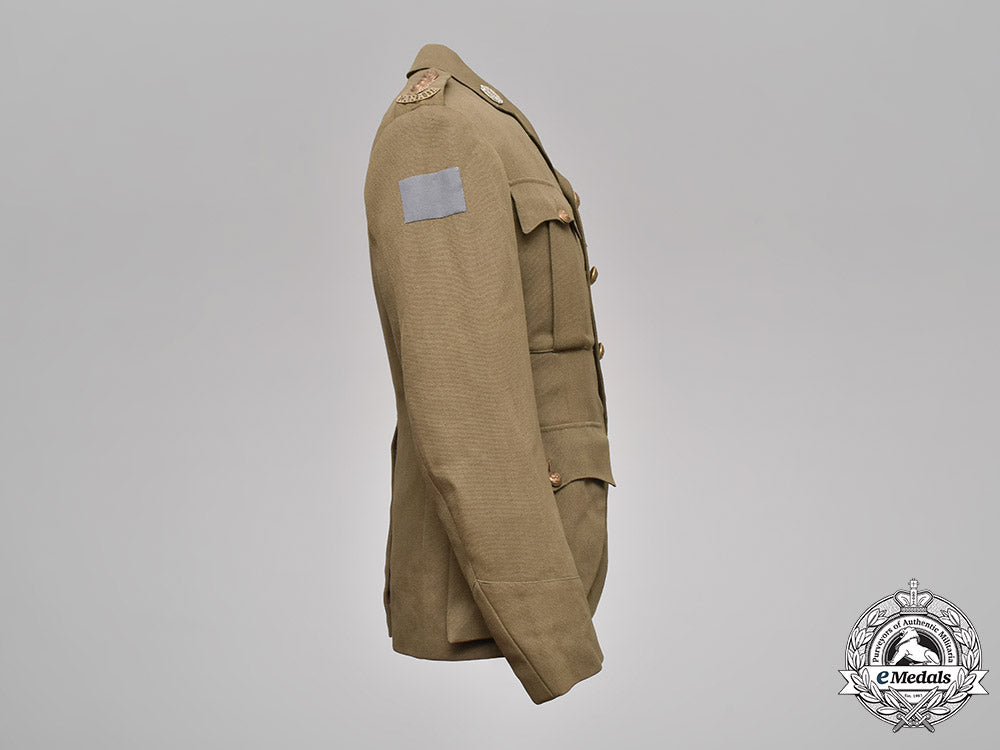
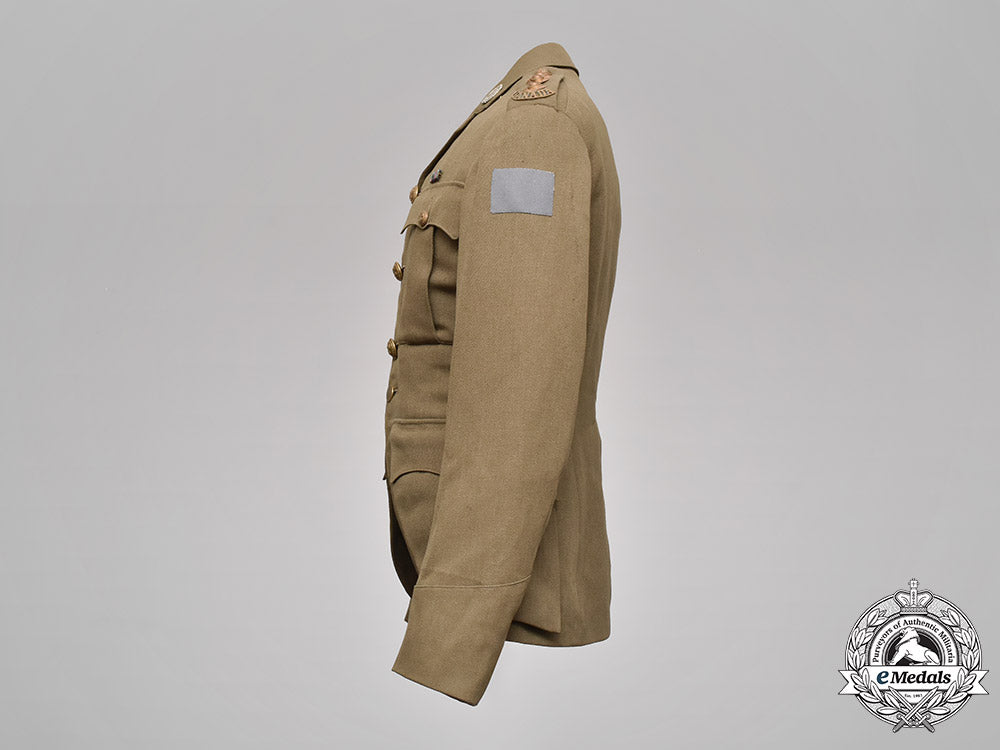
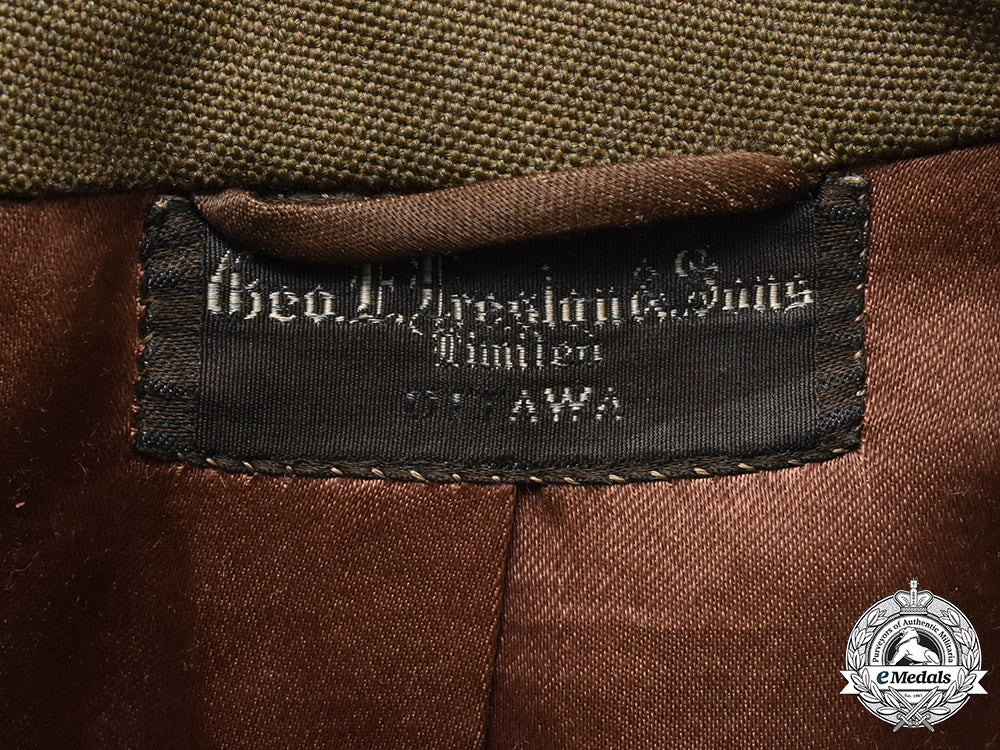
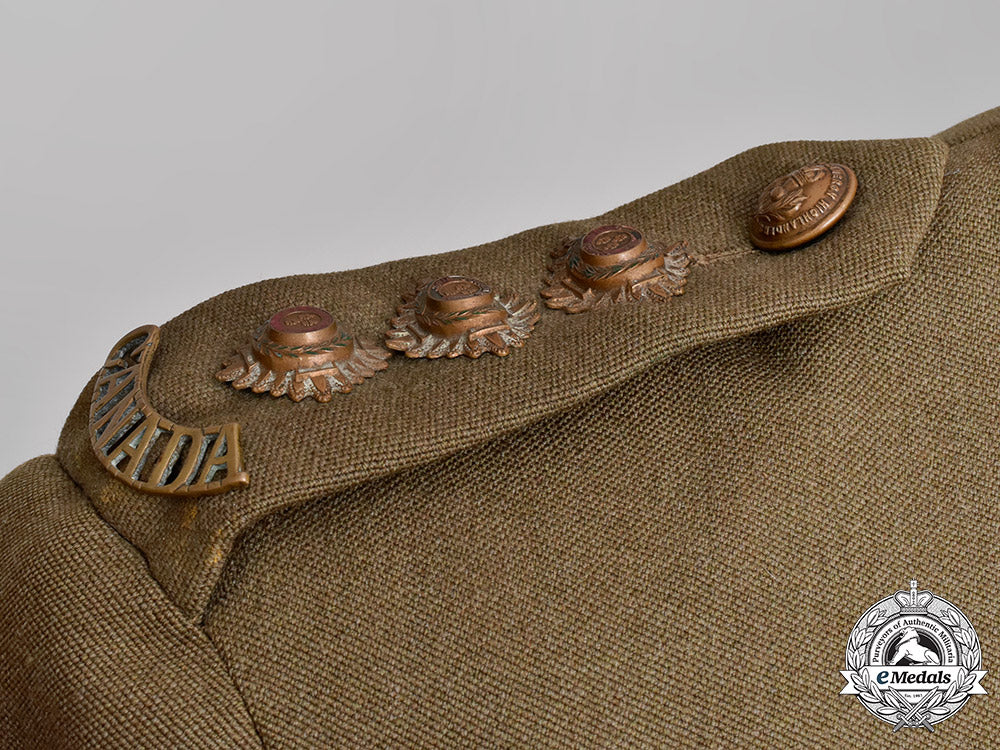
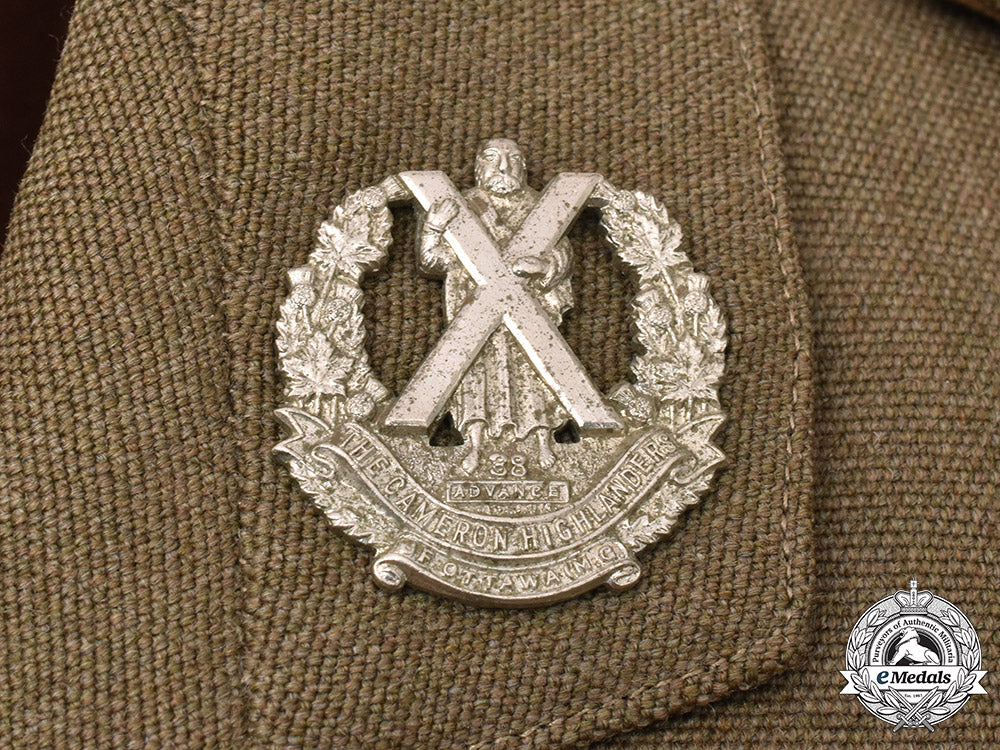
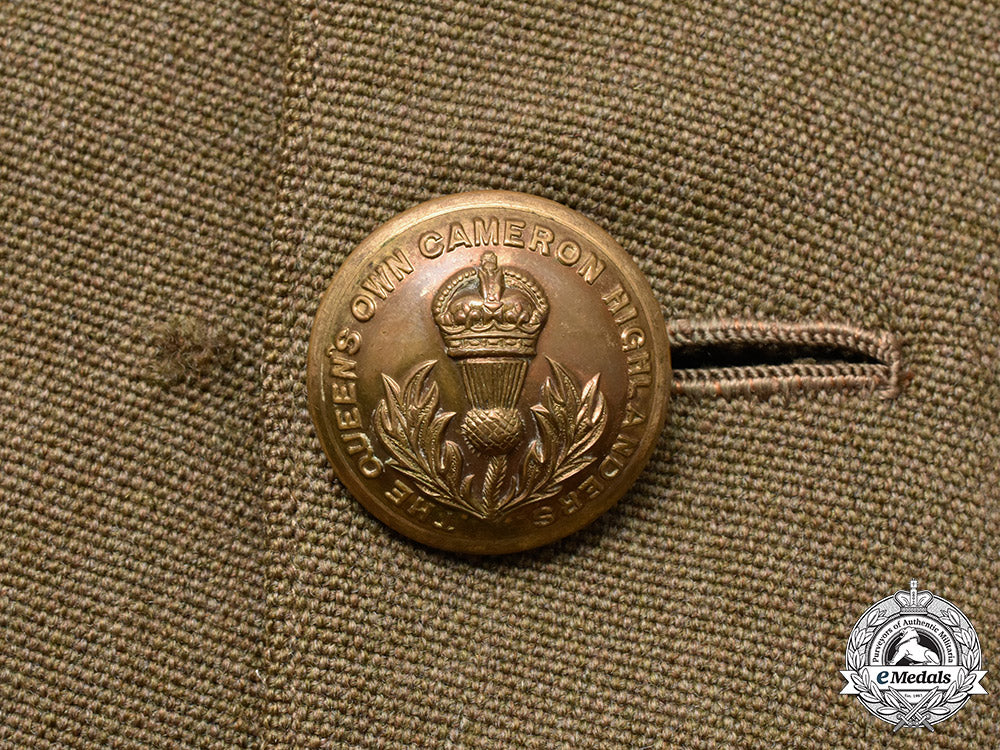
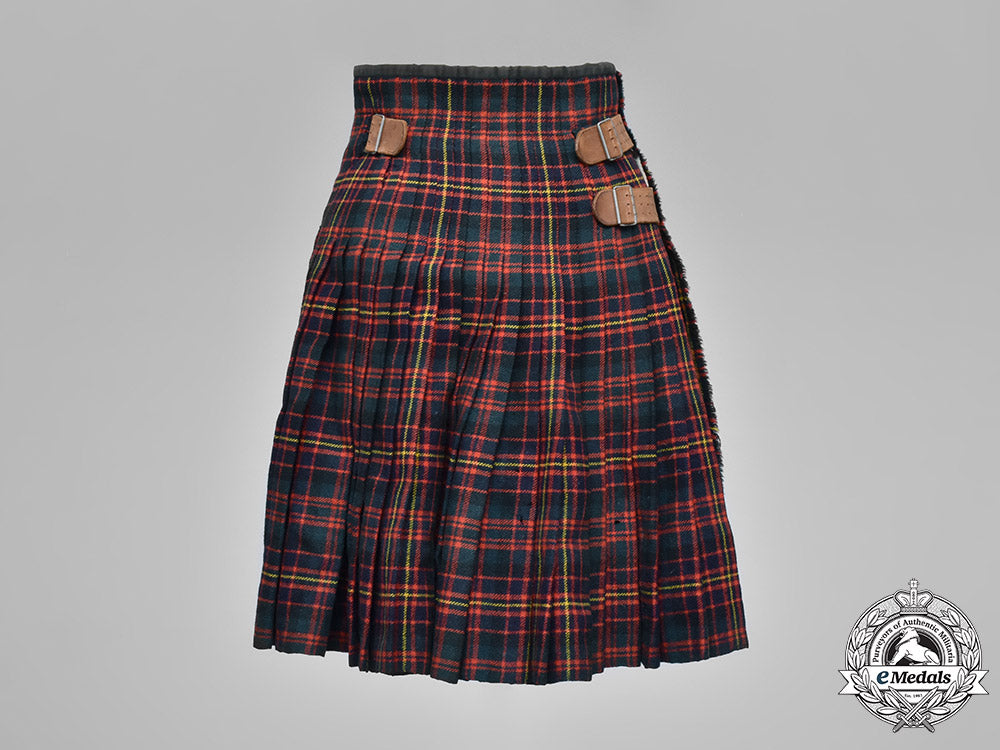
Canada. A Cameron Highlanders Service Uniform, To Lieut.-General John W. H. Rowley, Dso, Kia
Canada. A Cameron Highlanders Service Uniform, To Lieut.-General John W. H. Rowley, Dso, Kia
SKU: ITEM: C5691
Current Bid:
Your Max Bid:
Bid History:
Time Remaining:
Couldn't load pickup availability
Shipping Details
Shipping Details
eMedals offers rapid domestic and international shipping. Orders received prior to 12:00pm (EST) will be shipped on the same business day.* Orders placed on Canadian Federal holidays will be dispatched the subsequent business day. Courier tracking numbers are provided for all shipments. All items purchased from eMedals can be returned for a full monetary refund or merchandise credit, providing the criteria presented in our Terms & Conditions are met. *Please note that the addition of a COA may impact dispatch time.
Shipping Details
eMedals offers rapid domestic and international shipping. Orders received prior to 12:00pm (EST) will be shipped on the same business day.* Orders placed on Canadian Federal holidays will be dispatched the subsequent business day. Courier tracking numbers are provided for all shipments. All items purchased from eMedals can be returned for a full monetary refund or merchandise credit, providing the criteria presented in our Terms & Conditions are met. *Please note that the addition of a COA may impact dispatch time.
Description
Description
A Cameron Highlanders Service Dress Uniform, including a tunic constructed of durable, olive green cotton, the breasts of the jacket close by four reinforced button holes meeting an equal number of large, brass buttons, three present convex and circular with the remnants of a single centrally placed lug on the reverse, the obverse is embossed with a thistle surmounted by a King's crown and encircled by the name of the regiment THE QUEEN'S OWN CAMERON HIGHLANDERS the name of the manufacturer FIRMIN, LONDON is impressed on the reverse, with one plain replacement button, the tunic bears two pleated breast pockets and two hip pockets, each with reinforced buttonholes meeting an equal number of small, brass buttons with identical insignia to the centre breast buttons, the collar, constructed of olive green cotton, the collar is flanked by Cameron Highlanders metal collar tabs on either side, each measuring 30 mm (w) x 42 mm (h), the tunic is adorned on the shoulders with three rank pips and a CANADA pin on each shoulder strap, held in place by a small brass button, the left breast presents a ribbon bar presenting a ribbon for the Canadian Volunteer Service Medal with Maple Leaf Clasp, measuring 31 mm (w) x 10 mm (h), each upper arm presents a grey wool rectangular denoting the 3rd Canadian Division, the reverse of the tunic presents a central vertical tail skirt vent measuring 25.5 cm, the interior of the tunic is lined with brown rayon, with striped off-white rayon-blended material lining the interior of the sleeves, the interior of the tunic contains a pocket on the upper left breast and the upper right breast, which presents the label for GEO. E. PRESTON & SONS LIMITED, 217 Rideau St., Ottawa, Capt. John Rowley, 2.2. 1940 9278, the interior of the tunic presents another maker label at the neck, the tunic measures 47 cm across the shoulders, 64 cm in the sleeves, and 72 cm in total length, presenting minimal soiling and mothing, with a moderate rip to the interior lining material, and in otherwise near extremely fine condition.
Accompanied by Cameron Highlanders Kilt, constructed of the regimental tartan with green, blue and black as the dominant colours, with red and yellow lines, the interior of the waist is lined in white cotton fabric, presenting a maker label for MOSS BROS COVENT GARDEN, also marked with the writing CAMERON OF ERRACT possibly a reference to Sir Allen Cameron of Erracht, measuring 104 cm around the waist when unfolded, 60 cm in total length, with three brown leather buckles for closure, and in very fine condition.
Accompanied by a Sam Browne belt, fabricated from a very durable, high quality leather, well-stitched with an intricate pattern incorporated, that folds on the left side around the buckle and continues on to the mid-back, there are two D-Rings hanging from the left side and has straps hanging from each supporting a leather holster attached with a brass post placed prominently on the holster front, with a hook (frog) in between the D-Rings, used to suspend a sword or pistol, the top edge of the belt has two D-Rings, the front one connected to an adjustable leather shoulder strap on the left side, that, when swung over the right shoulder, connects to the D-Ring at the back, the belt has a post to the left of the buckle, while the right side has four rows of two holes and two central slotted holes, when the belt is fed through the buckle, it is held firmly in position with the two prongs of the buckle and the post wrapping around one of the two slotted holes.
Also with a Cameron Highlanders of Ottawa (M.G.) Glengarry Cap, this glengarry cap has a finely textured, black wool upper, bordered by a red and white checkered pattern in the wool which encompasses it, with a 21 mm wide black ribbed nylon border along the open end, a 60 mm (w) x 63 mm (h) white metal cap badge depicting St. Andrew on ground with his saltire cross at the centre of a wreath of thistles, the top arms of which join the top arms of the cross, at the base of the wreath is a cross bearing the title THE CAMERON HIGHLANDERS OF OTTAWA (M.G.), on the left side, topped by a slightly frayed red toorie, finished with dual black ribbons at the rear. The inside is lined in black nylon and is marked with a label stating GLENGARRY CAP, MADE IN SCOTLAND, the cap measures 30 cm x 9.5 cm, and is in near extremely fine condition.
Footnote: John William Horsley Rowley was born on 1 December 1912 to parents William Horsley Rowley (1851-1915) and Elisa Wildman (nee Ritchie) Rowley (1878-1963). He received his education at Ashbury College, Ottawa and Dalhousie University. He married Audrey Fellowes, daughter of Kenyon and Marjorie Fellowes, and was father of John William and Jane. Rowley enlisted on 2 January 1939 in Ottawa and he and his brother, Major General Roger Rowley (1914-2007), left Ottawa together with the 1st Battalion of the Cameron Highlanders of Ottawa, a machine-gun unit. Rowley fought in western Europe through France, Belgium, the Low Countries and into Germany.
In October 1944, an exploit that won high praise for Rowley was his feat in convincing a German garrison that a village they held in Holland was surrounded. After the German commander had been captured in a Canadian flank attack outside Groede, Rowley set out on his mission and informed the German medical officer who was left in command that the town was surrounded. In reply to a request from the Germans for a 24-hour truce to evacuate Dutch civilians through the Canadian lines, Major Rowley suggested the enemy withdraw from the village so that he could send in ambulances to get the wounded. Rowley, along with several others, moved along a dike 1,500 yards and came under heavy shell fire. They worked back and tried another route, hoisting a white flag and walking into a German platoon to enter Groede. Rowley outlined his request to a German medical officer, speaking in French together, coming to an agreement where the Germans lifted the mines from the road and ambulances were sent into evacuate the Canadian wounded. Rowley, aided by four men, carried out the task and returned to his lines with 14 wounded Canadian prisoners and a number of German and Dutch civilian wounded.
In February 1945, the North Shore (New Brunswick) Regiment was ordered to attack and take the town of Keppeln. The attack was held up many hundred yards from the town by heavy mortar and shell fire, and many casualties were suffered. Ten enemy dug-in tanks in the area of the church and machine-gun fire made further advances not only prohibitive in cost of lives but impossible. Lieutenant-Colonel Rowley, commanding the North Shore Regiment, re-organized the attack. Under extremely heavy enemy shell and machine-gun fire, Rowley personally led the first wave of the attack over 1800 yards of flat open country, calmly moving directly across country toward the objective. Rowley gallant action, the apparent lack of fear, and calm determination, inspired his men and was instrumental in the complete success of the battalion and the brigade plan. Rowley was awarded the Distinguished Service Order for his actions. He was killed in action at Millingen in the Rhine bridgehead on 24 March 1945. Rowley’s citations include the 1939-45 Star, France and Germany Star, Defence Medal, Canadian Volunteer Service Medal and Clasp, War Medal, and Mentioned in despatches.
Description
A Cameron Highlanders Service Dress Uniform, including a tunic constructed of durable, olive green cotton, the breasts of the jacket close by four reinforced button holes meeting an equal number of large, brass buttons, three present convex and circular with the remnants of a single centrally placed lug on the reverse, the obverse is embossed with a thistle surmounted by a King's crown and encircled by the name of the regiment THE QUEEN'S OWN CAMERON HIGHLANDERS the name of the manufacturer FIRMIN, LONDON is impressed on the reverse, with one plain replacement button, the tunic bears two pleated breast pockets and two hip pockets, each with reinforced buttonholes meeting an equal number of small, brass buttons with identical insignia to the centre breast buttons, the collar, constructed of olive green cotton, the collar is flanked by Cameron Highlanders metal collar tabs on either side, each measuring 30 mm (w) x 42 mm (h), the tunic is adorned on the shoulders with three rank pips and a CANADA pin on each shoulder strap, held in place by a small brass button, the left breast presents a ribbon bar presenting a ribbon for the Canadian Volunteer Service Medal with Maple Leaf Clasp, measuring 31 mm (w) x 10 mm (h), each upper arm presents a grey wool rectangular denoting the 3rd Canadian Division, the reverse of the tunic presents a central vertical tail skirt vent measuring 25.5 cm, the interior of the tunic is lined with brown rayon, with striped off-white rayon-blended material lining the interior of the sleeves, the interior of the tunic contains a pocket on the upper left breast and the upper right breast, which presents the label for GEO. E. PRESTON & SONS LIMITED, 217 Rideau St., Ottawa, Capt. John Rowley, 2.2. 1940 9278, the interior of the tunic presents another maker label at the neck, the tunic measures 47 cm across the shoulders, 64 cm in the sleeves, and 72 cm in total length, presenting minimal soiling and mothing, with a moderate rip to the interior lining material, and in otherwise near extremely fine condition.
Accompanied by Cameron Highlanders Kilt, constructed of the regimental tartan with green, blue and black as the dominant colours, with red and yellow lines, the interior of the waist is lined in white cotton fabric, presenting a maker label for MOSS BROS COVENT GARDEN, also marked with the writing CAMERON OF ERRACT possibly a reference to Sir Allen Cameron of Erracht, measuring 104 cm around the waist when unfolded, 60 cm in total length, with three brown leather buckles for closure, and in very fine condition.
Accompanied by a Sam Browne belt, fabricated from a very durable, high quality leather, well-stitched with an intricate pattern incorporated, that folds on the left side around the buckle and continues on to the mid-back, there are two D-Rings hanging from the left side and has straps hanging from each supporting a leather holster attached with a brass post placed prominently on the holster front, with a hook (frog) in between the D-Rings, used to suspend a sword or pistol, the top edge of the belt has two D-Rings, the front one connected to an adjustable leather shoulder strap on the left side, that, when swung over the right shoulder, connects to the D-Ring at the back, the belt has a post to the left of the buckle, while the right side has four rows of two holes and two central slotted holes, when the belt is fed through the buckle, it is held firmly in position with the two prongs of the buckle and the post wrapping around one of the two slotted holes.
Also with a Cameron Highlanders of Ottawa (M.G.) Glengarry Cap, this glengarry cap has a finely textured, black wool upper, bordered by a red and white checkered pattern in the wool which encompasses it, with a 21 mm wide black ribbed nylon border along the open end, a 60 mm (w) x 63 mm (h) white metal cap badge depicting St. Andrew on ground with his saltire cross at the centre of a wreath of thistles, the top arms of which join the top arms of the cross, at the base of the wreath is a cross bearing the title THE CAMERON HIGHLANDERS OF OTTAWA (M.G.), on the left side, topped by a slightly frayed red toorie, finished with dual black ribbons at the rear. The inside is lined in black nylon and is marked with a label stating GLENGARRY CAP, MADE IN SCOTLAND, the cap measures 30 cm x 9.5 cm, and is in near extremely fine condition.
Footnote: John William Horsley Rowley was born on 1 December 1912 to parents William Horsley Rowley (1851-1915) and Elisa Wildman (nee Ritchie) Rowley (1878-1963). He received his education at Ashbury College, Ottawa and Dalhousie University. He married Audrey Fellowes, daughter of Kenyon and Marjorie Fellowes, and was father of John William and Jane. Rowley enlisted on 2 January 1939 in Ottawa and he and his brother, Major General Roger Rowley (1914-2007), left Ottawa together with the 1st Battalion of the Cameron Highlanders of Ottawa, a machine-gun unit. Rowley fought in western Europe through France, Belgium, the Low Countries and into Germany.
In October 1944, an exploit that won high praise for Rowley was his feat in convincing a German garrison that a village they held in Holland was surrounded. After the German commander had been captured in a Canadian flank attack outside Groede, Rowley set out on his mission and informed the German medical officer who was left in command that the town was surrounded. In reply to a request from the Germans for a 24-hour truce to evacuate Dutch civilians through the Canadian lines, Major Rowley suggested the enemy withdraw from the village so that he could send in ambulances to get the wounded. Rowley, along with several others, moved along a dike 1,500 yards and came under heavy shell fire. They worked back and tried another route, hoisting a white flag and walking into a German platoon to enter Groede. Rowley outlined his request to a German medical officer, speaking in French together, coming to an agreement where the Germans lifted the mines from the road and ambulances were sent into evacuate the Canadian wounded. Rowley, aided by four men, carried out the task and returned to his lines with 14 wounded Canadian prisoners and a number of German and Dutch civilian wounded.
In February 1945, the North Shore (New Brunswick) Regiment was ordered to attack and take the town of Keppeln. The attack was held up many hundred yards from the town by heavy mortar and shell fire, and many casualties were suffered. Ten enemy dug-in tanks in the area of the church and machine-gun fire made further advances not only prohibitive in cost of lives but impossible. Lieutenant-Colonel Rowley, commanding the North Shore Regiment, re-organized the attack. Under extremely heavy enemy shell and machine-gun fire, Rowley personally led the first wave of the attack over 1800 yards of flat open country, calmly moving directly across country toward the objective. Rowley gallant action, the apparent lack of fear, and calm determination, inspired his men and was instrumental in the complete success of the battalion and the brigade plan. Rowley was awarded the Distinguished Service Order for his actions. He was killed in action at Millingen in the Rhine bridgehead on 24 March 1945. Rowley’s citations include the 1939-45 Star, France and Germany Star, Defence Medal, Canadian Volunteer Service Medal and Clasp, War Medal, and Mentioned in despatches.









You May Also Like
Germany, HJ. A 1938 National Trade Competition Victor’s Badge, Gold Grade in Case, By Gustav Brehmer
G60096
Italy, Republic. An Order of Merit of the Italian Republic, Grand Cross Set by Johnson, 1970
EU23677
Spain, Franco Period. An Order of Civil Merit, Grand Cross Set
EU23731
Russia, Imperial. An Order of St. Anne, II Class in Gold
EU23720
Austria, Imperial. An Order of the Iron Crown, III Class in Gold, by Rothe, c.1900
EU23723
-
Germany, HJ. A 1938 National Trade Competition Victor’s Badge, Gold Grade in Case, By Gustav Brehmer
G60096
Add to CartRegular price $3,950 USDRegular price $0 USD Sale price $3,950 USDUnit price / per -
Italy, Republic. An Order of Merit of the Italian Republic, Grand Cross Set by Johnson, 1970
EU23677
Add to CartRegular price $950 USDRegular price $0 USD Sale price $950 USDUnit price / per -
Spain, Franco Period. An Order of Civil Merit, Grand Cross Set
EU23731
Add to CartRegular price $600 USDRegular price $0 USD Sale price $600 USDUnit price / per -
Russia, Imperial. An Order of St. Anne, II Class in Gold
EU23720
Add to CartRegular price $2,950 USDRegular price $0 USD Sale price $2,950 USDUnit price / per -
Austria, Imperial. An Order of the Iron Crown, III Class in Gold, by Rothe, c.1900
EU23723
Add to CartRegular price $3,950 USDRegular price $0 USD Sale price $3,950 USDUnit price / per
Do you have a similar item you are interested in selling?
Please complete the form and our client care representatives will contact you.
Sell Item






















